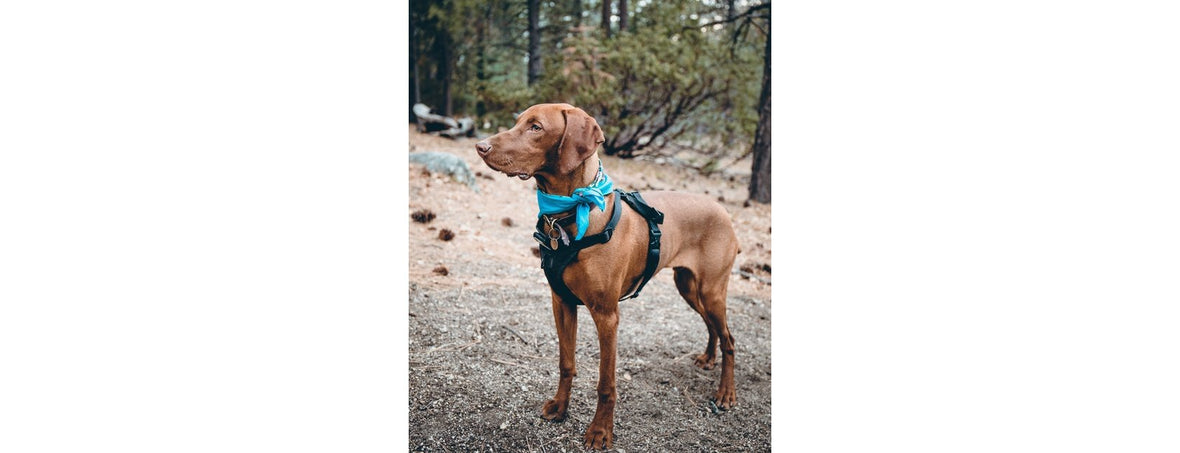
The damage caused by the harness, yes, it's time to clarify!!!
Adelchi Rainone
I'm writing this article because I'm a little tired of hearing people who praise the harness so much, looking at those who instead have a dog with a collar and never strangle it afterwards, like a sadist who hurts the really dog!!!
Since we have talked widely and at length about the damage caused by the collar, whether it is strangled or not, today I want to list the damage it causes when compared to the harness, because the latter also causes them, gentlemen!!!
To do this I quote the textual article by Doctor Britta Kutscher, born in 1965, who is a qualified physiotherapist and osteopath for dogs and horses. She has had dogs for more than 20 years, practices dog sports and uses her two four-legged friends as a co-therapist. Born in Dortmund, she works in her private practice as a physiotherapist in Karby on the Baltic Sea.
Translated from German, translation by Alexandra Braaz.
Source:
“The Dog” 7/10. Editorial team DER HUND Wilhelmsaue
Pressure distribution
To clarify the point of the discussion, whether a collar or harness is the right choice for your dog, the best thing to do is to look at the facts of nature. The bib fashion was born from a correct physical reflection: the greater the contact surface, the less pressure on a point. To distance ourselves from harsh methods, we thought about how to remove pressure from the dog's neck and came up with the idea of distributing the pressure. Measurements with special instruments have shown that the pressure on a point actually decreases, but pressure is exerted on points that absolutely cannot withstand pressure. The use of a harness may be justified for health reasons, but ultimately the decision is up to the owner.
The anatomy of the neck:
The dog is a hunter and despite domestication it has maintained its physical characteristics. Regardless of whether a companion dog or a hunting dog, in general the skeleton of all dogs is the same, except for a few details such as the shape of the head. And all dogs have the same muscles with the same functions. As a predator, the dog requires very robust neck muscles as the prey continues to rebel once it has been grabbed. The dog instinctively holds it tightly, it does not want to starve. The cervical spine is made up of 7 cervical vertebrae and is the most mobile part of the spinal column and cushions very well the tugs of the prey fighting for its life. Even small dogs can overwhelm prey much larger than themselves. For example, a small Terrier is capable of killing a deer, much to the amazement of its owner.
The use of the harness is intended to relieve the dog's neck.
Special case of sled dogs
The towing point of the Husky harness is at the base of the tail and allows the whole body to act freely. The high towing force is only ever required for a short time, the weight to be towed is usually divided across several dogs and the sled dog almost always walks with the trailer practically horizontally, to name just a few features of this particular harness.
The idea of wearing a harness is not an invention of modern trainers. It has its origins in the work of sled dogs. So a Husky pulls a sled without taking any damage. However, it is a harness designed in a completely different way compared to commercial harnesses for common use and where the dog does not have to pull.
Have you ever noticed when two dogs fight, how they tug and drag each other... Or what dog doesn't love playing tug-of-war with a toy? With these games it is easier to damage the teeth than the cervical spine, otherwise the canine species would have become extinct due to lack of success during hunting. Ergo: The cervical spine is very mobile and is surrounded by very well developed muscles. With this mobility it also forgives some lateral jerks.
The delicate thoracic region
Similar to a willow branch which is soft and elastic as soon as it is broken but when dried it breaks without much effort, even in the anatomy of the dog it is decisive whether the force is exerted on a muscular part or on rigid parts where the bones are under the skin poorly protected. What characterizes this region of the body? The chest is the bearer of the bib. The thorax is made up of 13 thoracic vertebrae. From each vertebra a pair of ribs extends in a large downward arc. At the sternum, which is made of small bones similar to vertebrae, the ribs meet more or less directly and close the thorax. The sternum bones form a mobile section. The human sternum, on the other hand, is a rigid bone plate. On the right and left sides are the shoulder blades, which are connected only with muscles. A bony connection like the human collarbone is missing in the dog. The scapulae form the scapulohumeral joints on the front side together with the humerus. They can be felt well at the front of the torso on the right and left at the central sternum. It stings here. When parts of the bibs rub or dig into the armpits, injury or irritation can occur.
Ribbons that slide
Looking carefully you can see that at every step there is enough freedom of movement for the dog. If the shoulder joints are limited due to external influence, such as the Norwegian harness, not only discomfort for the dog (which woman has never cursed for a bra strap that had slipped down? And going to do sports like that?) but creates also greater strain on the underlying joints, especially the elbow joints. The shoulder blades move significantly back and forth, so that strips of tissue resting here disturb the natural economy of movement. The chest belt now rests on your sternum, or at least it should. Who has never tried to balance a board on a roll? At the slightest movement of the roll the board slides down. The situation with the chest strap of the harness is very similar. Since the dog is a mobile creature, the chest strap has no chance of remaining on the sternum. It slides to one side and presses onto the very delicate joints between the ribs and sternum. Or slides into your armpits. Important nerves and blood vessels that supply the legs run here. If parts of the harness produce pressure or friction in the armpits, muscle damage and/or nerve irritation may occur, leading to paralysis.
But the ribs and sternum don't like the pressure either.
The straps on most harnesses limit the shoulder and elbow joints.
Restriction of breathing
The lateral chest straps place more weight on the dog's mobile sternum in the event of a lateral pull of the dog. Additionally these straps run over the ribs. The function of the ribs is to widen and contract again to produce the over- and under-pressure in the chest, necessary for breathing. One more question to the ladies: how does it feel when you have to run with a bra with a smaller circumference than necessary? The gentlemen take their breath away just at the thought of such a restriction. Now I will probably be told again that you shouldn't tighten the bib so much. But even the mere fact of pulling on the leash is enough to have the effect of limiting breathing. Another factor that causes discomfort is the large buckles on many harnesses that rest on the ribs. If you do not remove the harness immediately when the dog has to or wants to lie down, the buckles press on the sensitive periosteum of the ribs. Who likes to sleep on crumbs, not to mention little metal and plastic things?
With a long back
Even those who think they are protecting their dachshund's long back are unfortunately wrong! The decisive factor is that a bend (break) of the spine arises: the leash eyelet is located above the middle/rear part of the thoracic spine. The direction of the shot, and therefore the angle of the lever, depends on the height of the dog in relation to the height of the handler. The smaller the dog, the greater the bend in the spine when the leash is tight. Pressure measurements have shown that the most saving pressure distribution is achieved with a wide, soft collar in which all buckles and the leash eyelet are positioned on the upper part of the neck.
Decide for yourself
There are only a few medical exceptions for which it is right to choose the harness. These include injuries or illnesses to the neck, also the tendency to tracheal collapse (instability of the trachea). That said: you choose the tools to lead your dog from another point of view that is not for fashion or imposed by the rigorous rules of a training camp.
Everyone has to decide for themselves what seems like the best means for each individual dog.
So now I want to make some considerations: it is obvious that both the collar and the harness have pros and cons, we always need to see how they are used by the owners!!!
It's natural that a choke collar, if used incorrectly, harms the dog, but I wonder, which owner takes pleasure in "choking" their dog??!
So on the other hand I could give the same extreme example of someone who uses the harness to lift the dog from the ground, and I see many people doing it!!!
Both are wrong behaviors!!!!!
Therefore, scientifically, one cannot, and must not, condemn either one instrument or the other!!!!!!
Therefore, instead of opening one's mouth and taking a breath without knowledge of the facts, one must understand that everyone must choose what they consider most appropriate without pointing out those who opt for a different choice, while it is always right to understand how to use it correctly both of these tools, and if you have doubts, contact a serious professional, who if he is one will not denigrate the harness or the collars, not even the choker ones!!!!











